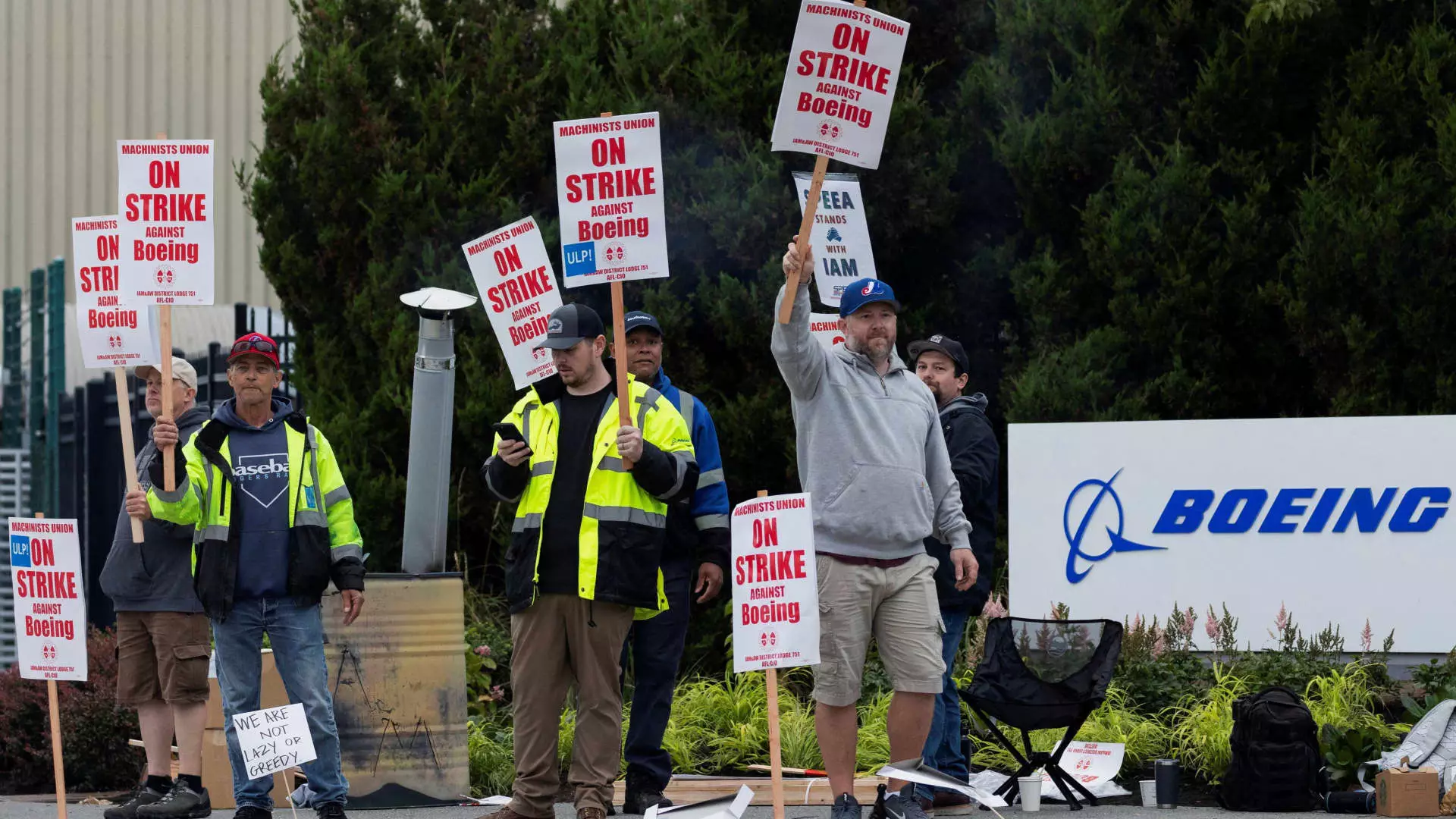In the lush Pacific Northwest, tensions are palpably rising as Boeing finds itself grappling with a significant workforce strike led by machinists demanding better pay and working conditions. This dispute highlights not only the struggles of a cash-strapped aerospace giant but also the dire realities faced by workers in a region where the cost of living has ballooned. As the strike enters its critical stages, it underscores the dual challenges of workforce satisfaction amidst financial viability for one of America’s leading manufacturers.
For the nearly 30,000 workers who walked off the job, the stakes are daunting. Many machinists have voiced their concerns about the high cost of living in the Seattle area, where housing prices have surged over the past decade. Rising homeownership costs, reportedly increasing by 142% within the last ten years, weigh heavily on workers’ shoulders, forcing them to contemplate second jobs just to make ends meet. Amid this economic backdrop, workers have formed a united front, driven by the aspiration for fair compensation that reflects their skill and dedication.
While workers are actively seeking higher wages, Boeing is battling its own financial pitfalls. The company, with accumulated debts exceeding $60 billion, barely managed to scrape along financially in recent years, recording no annual profits since 2018. The strain of new challenges, including a catastrophic incident involving one of their flagship aircraft, has further drained resources. Estimates reveal that the ongoing strike could cost Boeing a staggering $50 million a day, a sum that could escalate if a deal is not reached quickly.
With production at a standstill, the ripple effect on Boeing’s extensive supplier network cannot be overstated. Components and contracts are drying up, forcing suppliers to halt shipments and take stock of their own financial stability. As an immediate response to the strike’s ramifications, Boeing has initiated furloughs affecting tens of thousands of staff members, including high-ranking executives—a strategy that may lead to further complications down the line.
Efforts to reach a resolution appear hindered by historical tensions and a lack of progress during negotiations. Recent proposals from Boeing have suggested wage increases of 25% over four years, yet many workers feel this is inadequate compared to their demands for nearly 40% hikes. The current negotiating dynamics reflect deeper issues, including dissatisfaction with rollbacks in pensions and the desire for annual bonuses. As both sides find themselves at an impasse, the pressure intensifies for a resolution that honors the workforce’s dedication and expertise while ensuring Boeing’s economic recovery.
New CEO Kelly Ortberg, who took the helm only weeks before the strike, is attempting to navigate these rough waters while assuring staff of management’s commitment to finding common ground. The urgency of reaching an agreement is compounded by growing consumer expectations for timely aircraft deliveries and a looming threat of potential downgrades by credit rating agencies should the strike drag on indefinitely.
The current strike at Boeing represents more than just a localized labor conflict; it forms part of a broader narrative of labor movements across various sectors in the United States. Recent years have witnessed a resurgence of organized labor, with numerous strikes successfully pushing companies towards more favorable worker agreements. The Biden administration has weighed in, urging both Boeing and union representatives to expedite efforts towards finding a resolution. This intervention underscores the importance of addressing workers’ needs in order to restore manufacturing productivity in a recovering economy.
As the strike continues, many machinists remain resolute in their quest for better pay despite the immediate personal costs of lost wages and benefits. For them, the act of striking is not just a protest; it represents a critical fight for dignity in the workplace, which echoes the broader struggles faced by American workers in an evolving economy.
Boeing now stands at a crossroads. The outcomes of its current struggle hinge not only on immediate bargaining strategies but also on long-term decisions that will impact its viability as a major employer in the aerospace industry. For its machinists, this fight transcends economic compensation; it symbolizes the need for valuing skilled labor in an increasingly challenging job market. Moving forward, striking a balance between corporate survival and employee satisfaction could determine Boeing’s ability to reclaim its prominent position in the aerospace sector—one way or another, both sides must engage in a dialogue to forge a more sustainable path.

Leave a Reply